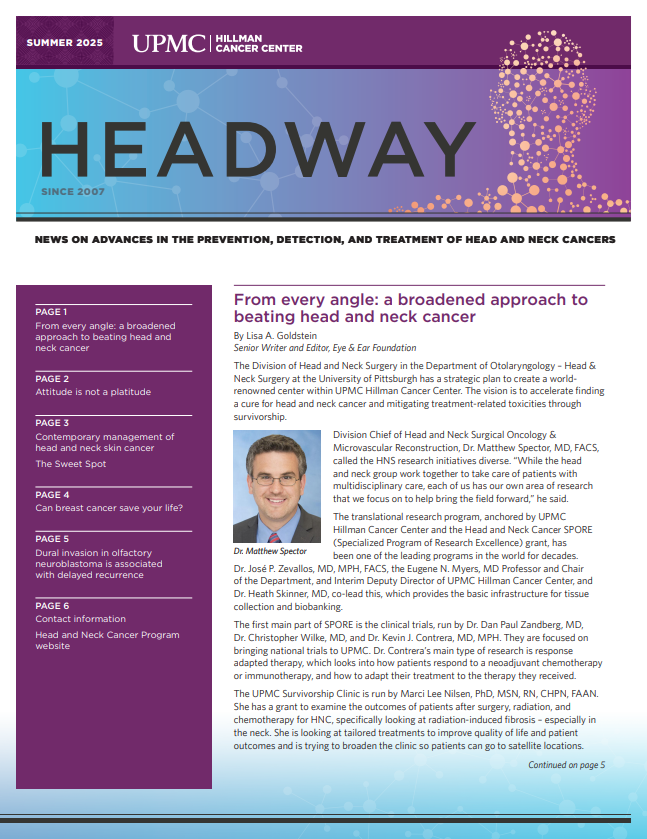Head and Neck Cancer (HNC) is really cancer that develops in the throat, sinonasal cavity, oral cavity, larynx, nasopharynx, oropharynx, or hypopharynx. Oropharyngeal cancer is currently the most prevalent.
Throat cancer caused by HPV has been increasing. In the U.S., 65,410 people have been diagnosed with throat cancer. Males tend to get it more than females, with a ratio of 3:1. Typically patients are over 50 years of age.
Can throat cancer be treated? There’s good and bad news. HPV-related cancer is easy to treat in that it is easy to cure with over a 90 percent cure rate. The problem is that it sometimes takes surgery or radiation, which are used for small cancers. If the cancer is bigger or associated with lumps in the neck (metastasis) or lymph nodes, then people are commonly treated with surgery and/or radiation – sometimes with radiation and chemotherapy.
People with more advanced cancers can still be cured, but they require more interventions.
Treatment options include:
- Surgery or radiation
- Surgery + radiation
- Radiation + chemotherapy
- Surgery + radiation + chemotherapy
Late and long-term effects can happen during radiation and continue, or they can start months to years after radiation or treatments are completed.
The UPMC Head and Neck Cancer Survivorship Clinic was established in December 2016 by Dr. Jonas Johnson, MD, FACS, Chairman Emeritus of the Department of Otolaryngology, and Marci Nilsen, PhD, RN, CHPN, Assistant Professor at the University of Pittsburgh, School of Nursing, Department of Acute & Tertiary Care, with a secondary appointment in the School of Medicine, Department of Otolaryngology. Dr. Nilsen also serves as Director of the Head and Neck Cancer Survivorship for UPMC Hillman Cancer Center.
The clinic is multidisciplinary and includes an audiology assistant, two nurses, a dietician, dentist, surgeon/APP, physical therapist, and speech-language pathologist (SLP). The beauty of this coordination is that it requires only one visit to one clinic with one co-pay. Because patient symptoms cross disciplines, many times it is necessary to work with different groups to come up with the best plan.
Swallowing or dysphasia is the most common treatment-related effect reported by survivors. Saliva or dry mouth is second, followed by pain. Other common symptoms have remained consistent since the Survivorship Clinic has started its treatment protocol: speech, activity, taste, anxiety, appearance, mood, recreation.
Patients are reporting fewer symptoms until about the six-year mark. At that point, patients start to statistically report a higher symptom burden. This could either be a long-term effect from treatment, or new symptoms that start around this time. Anatomy changes and radiation also changes the skin and musculature. Add aging to the equation. The combination of aging and treatment is probably what results in more symptoms later.
Components of UPMC Survivorship Care
- Prevention and detection of new cancers and recurrent cancer
- Surveillance for recurrence or new primaries
- Interventions for long-term and late effects from cancer and its therapies
- Coordination between specialists and primary care providers to ensure that all of the survivor’s needs are met
For the latest news on groundbreaking head and neck cancer research, subscribe to EEF’s Monthly Newsletter.
For more information, visit our Head and Neck Cancer blog and the links below:
